Originally, the next stop of our Australian trip after several days spent in Adelaide should’ve been the western part of the country. We even wanted to skip the Red Center completely as we stupidly thought it’s just that big red rock in the desert and nothing more. However, in the end we were happy to have listened to the recommendations of our Aussie friends. This desert in the middle shouldn’t be missed because the whole trip gives a great insight into the history of the original Aboriginal population. And we totally need to come & explore Western Australia next time, ideally with a camper van (hopefully we will start driving some time soon :)
The Red Center, or the southern part of the Northern Territory, was otherworldly amazing. And it was definitely not only the famous rock Uluru and its spiritual meaning, but also the red domes of Kata Tjuta, many dramatic canyons, lakes and views, beautiful sunrise & sunsets and a (very much not so beautiful) massive amount of flies. We will show you around!
- Welcome to Alice Springs
- Exploring West MacDonnell Ranges
- Two days in Uluru-Kata Tjuta National Park
- How to arrive and get around
- Where did we stay
Welcome to Alice Springs
We’ve got the first proof that the name of this area isn’t over-promising anything already during the flight from Adelaide when approaching Alice Springs. We were super happy to get the window seats on a clear day so we could stare all the time at that red scenery below. And we were impressed. What do you think?

Alice Springs is a small town in the middle of Australia – it’s really almost equidistant from both Adelaide in the south and Darwin in the north (1500 km up and down). And even with its population just slightly above 25 thousands, it’s the third largest city in the Northern Territory! The original inhabitants of the city and the surrounding area were Aboriginal Arrernte or Aranda people that called this desert home for tens of thousands of years.
After arriving in the city, we went to look around, buy some beer for refreshment (so hot here!) and tried to figure out what to do in three upcoming days. Yes, and we were told we should get some flynets for our faces because without that, our adventures in the Red Center can be a bit unpleasant. Unfortunately, everything was as sold out as the toilet paper during the recent corona times :(
Exploring West MacDonnell Ranges
West MacDonnell Ranges, or West MacDonnell National Park is quite close to Alice Springs (at least by Australian standards). We were offered this trip as an alternative to an additional day spent around Uluru (cause there weren’t enough people for a 3-day tour in late May). But sometimes the things you don’t plan for and maybe even don’t know about beforehand are the best. Again and again :)
We visited the national park on a tour with a tour group, mostly our parents’ age and older, so it was a refreshing change to not be considered the group elders anymore (rather grandchildren :D). Anyways, if you decide to visit on your own, we think this info and map may be handy.
All the gorges and waterholes we saw and the mountain scenery around us dressed in the red-blue-green palette were stunning.

We tried to find some shy rocky wallabies on a walk through Simpsons Gap,

stopped in the mysterious Standley Chasm,

almost got eaten by an army of flies at Ochre Pits (it’s really no fun without a flynet, at least Pepe had his dutiful Arabian headdress),
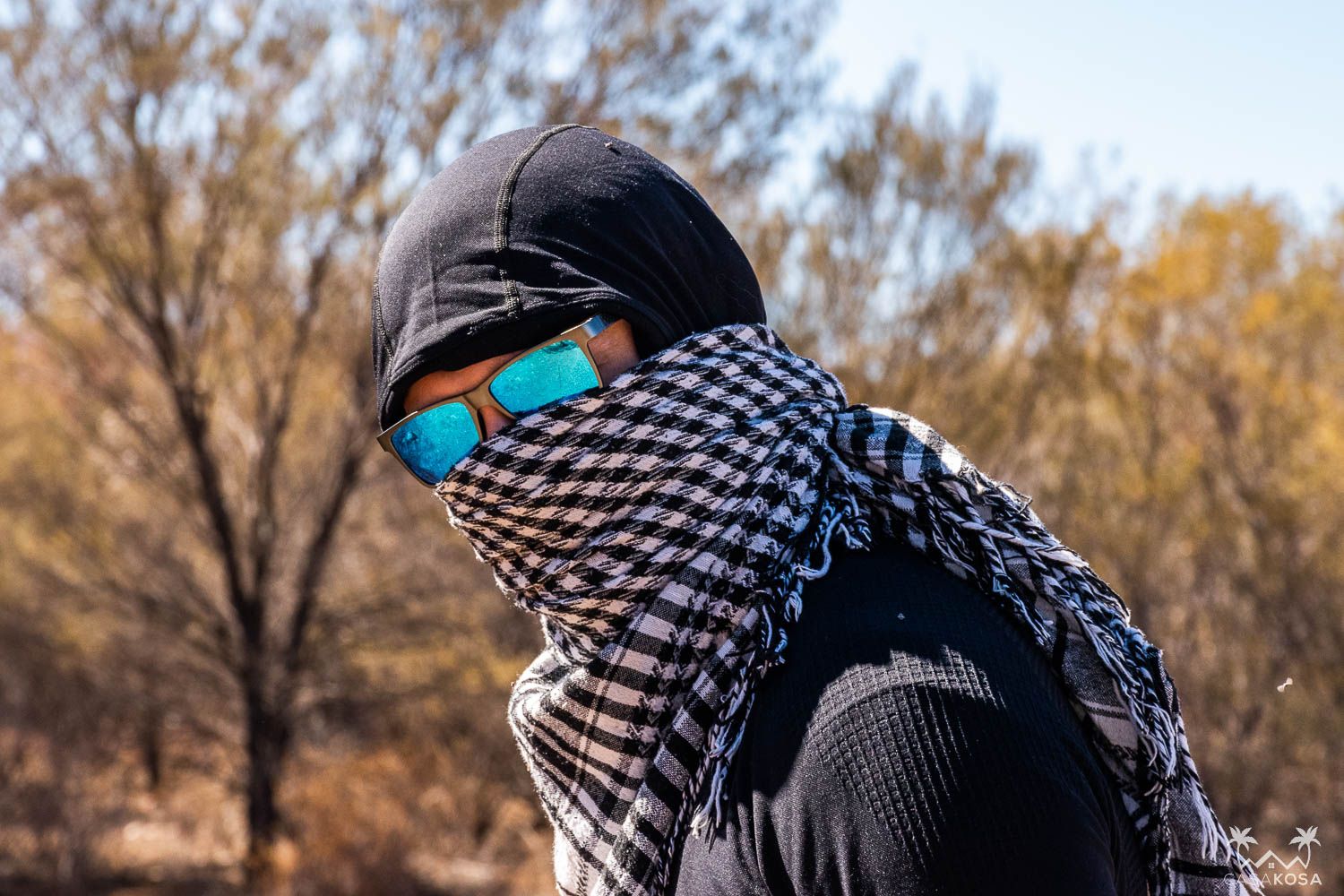
stopped for a lunch and a short walk in Glen Helen – another nice gorge and lake,
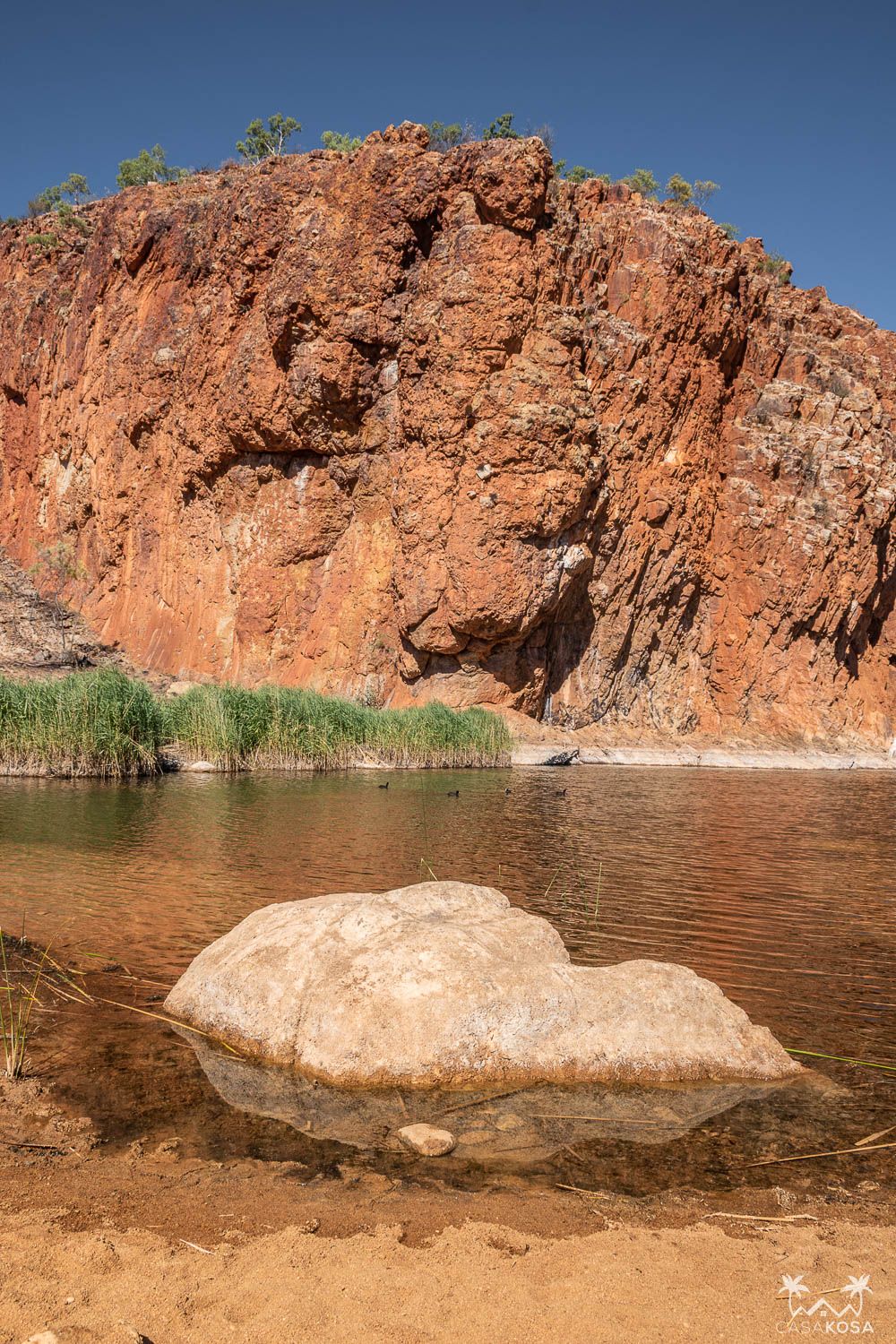
enjoyed the afternoon light in Ormiston Gorge (and could potentially swim in it, but meh – we’re kind of picky when it comes to the clearness of our dipping water)
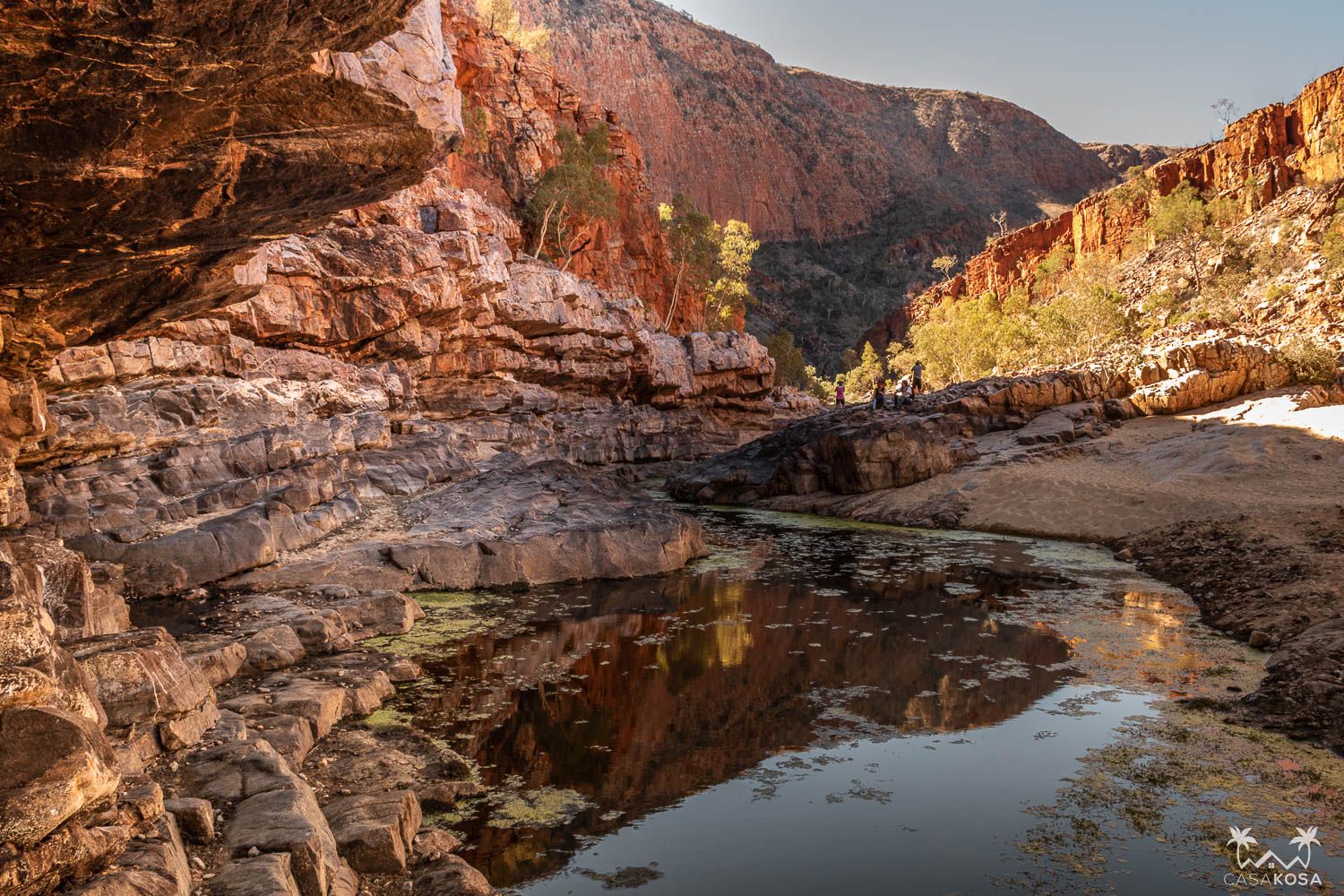
and ended the trip with beautiful Ellery Creek Big Hole. It was a long but a nice day full of surprises.

After returning to Alice and getting a tasty kangaroo steak and a good sleep in our next super cozy shelter, we were prepared for exploring this gorgeous desert land further.

Two days in Uluru-Kata Tjuta National Park
The next adventure started way too early for our standards as we were picked up by our guide in the middle of the night (i.e. around 6am) and went on a very long journey (more than 450km) through the desert to Uluru-Kata Tjuta National Park. It looked like there’s really nothing along the way but to our amazement we’ve been greeted by some petrol stations providing toilets, food and flynets, hooray!

One of them even had an emu farm with these curious guys.

After several hours spent listening to Pepe’s collection of German pirate songs all our co-trippers were more than happy to leave the van and go to read something about the national park and the Aboriginal people in the Cultural Centre. Our favorite part of the exhibition was a wall mounted cooking book consisting of tips for hunting sometimes quite unexpected desert animals and preparing food out of them. And as we learned, meat in the local language is called kuka. The question “How to cook this kuka?” included in all the recipes has remained one of our all times favorite :)
That famous rock in the middle of Australia
And then we spotted it! Honestly, we haven’t expected this sandstone monolith to be so huge and having so many caves and holes in its surface. And we must admit, it really feels magical!
Since it’s an Aboriginal sacred place it’s rude to climb it (the one girl from our group who snuck away to do it even after several warnings was ostracized the whole evening). That being said, lots of disrespectful visitors used to do it – that’s why they closed officially for all climbs in October 2019. To enjoy the atmosphere of this place in a polite way we opted for a base walk, admiring the strange sandstone creations with huge symbolism in Aboriginal religion and mythology and tried not to take photos of the sacred spots. But since it was quite confusing to distinguish all the sacred ones, we may have done so by accident and right here we officially offer our apologies.
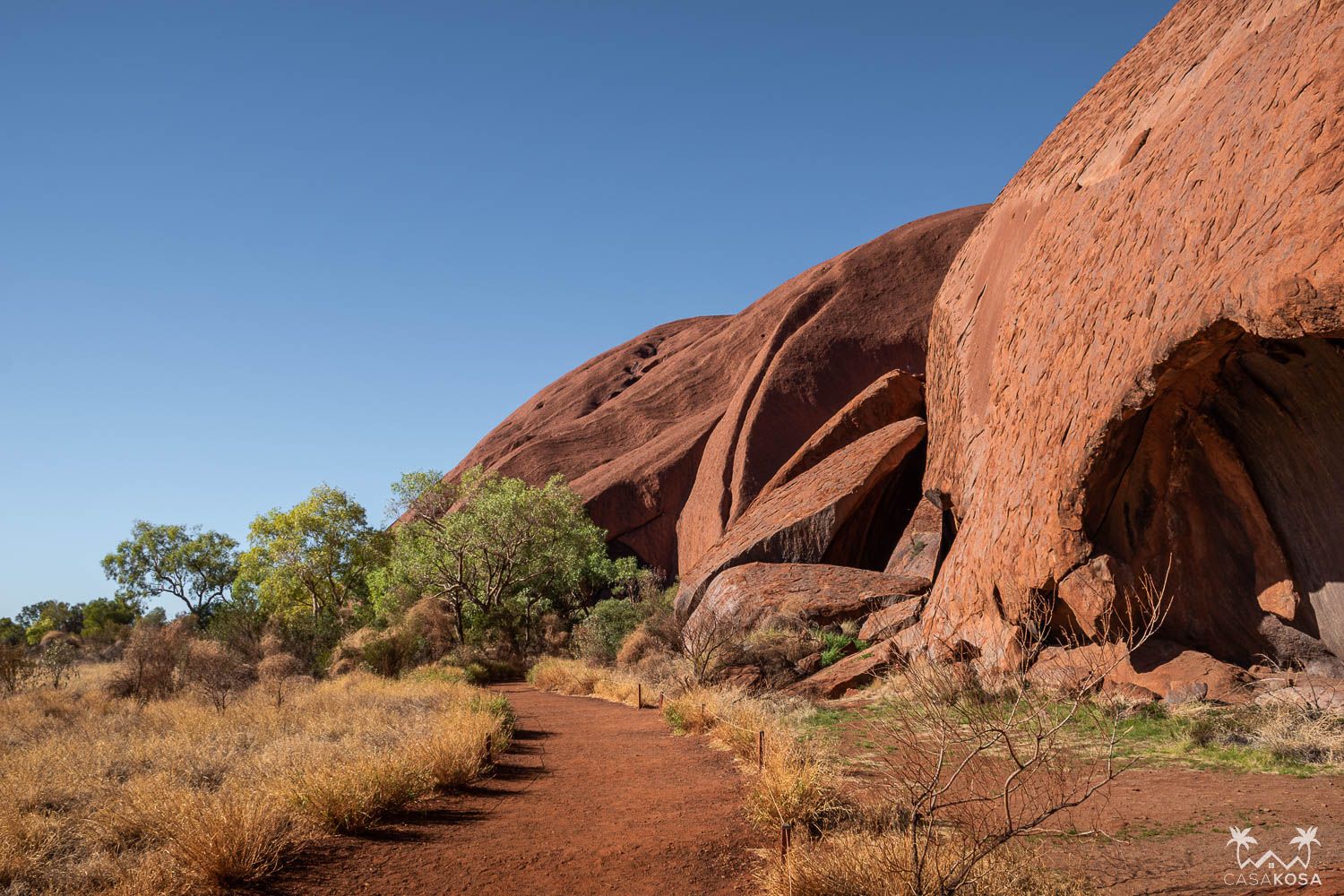
After the base walk our guide prepared us a nice dinner (a luxury we didn’t expect) and while eating we got to observe a stunning sunset over color changing Uluru.
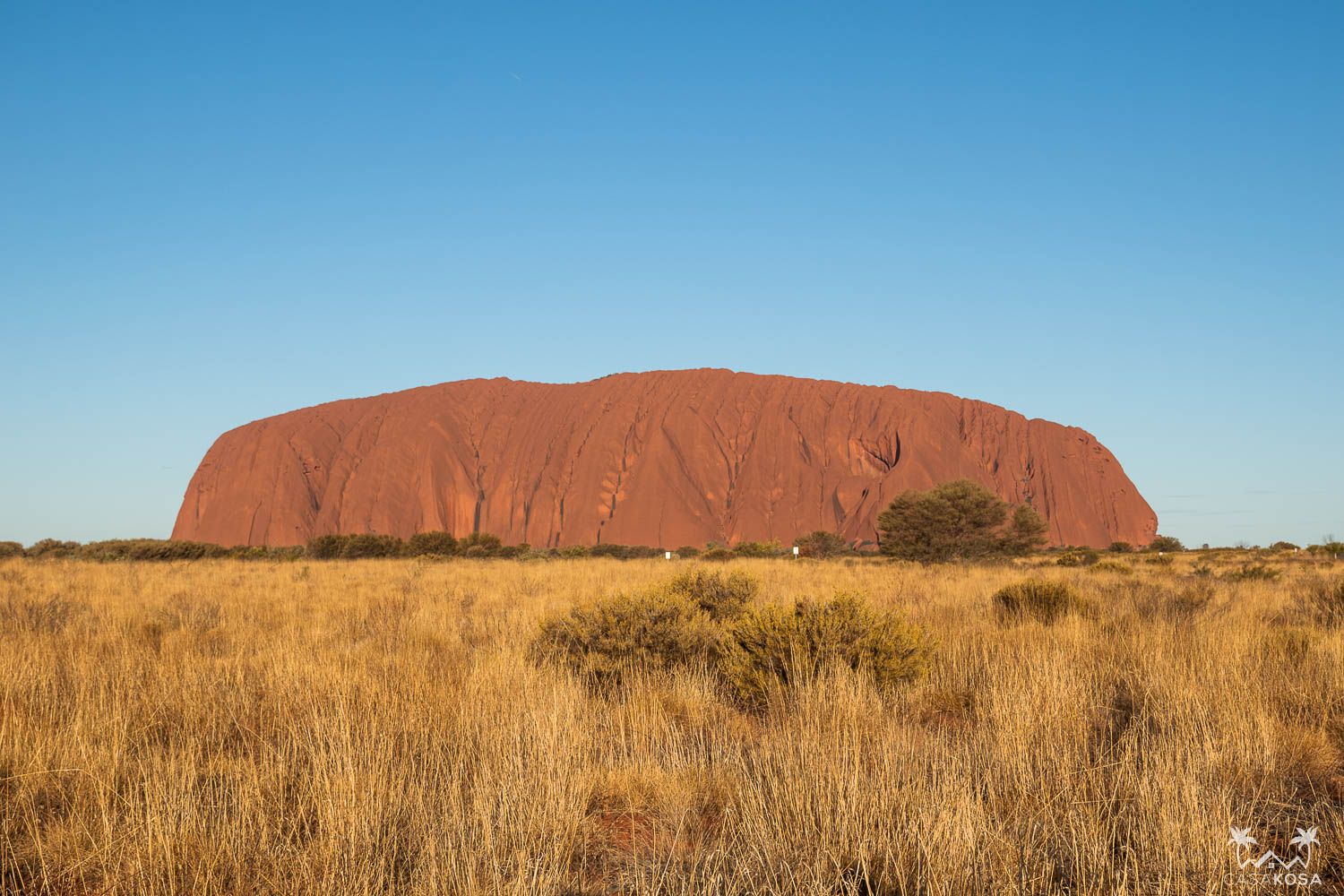
That evening we stayed at a campsite drinking Pepe’s rum around the campfire and watching the beautiful night sky with Mia’s favorite Southern Cross. When the rum was gone, we prepared ourselves for sleeping in swags for the first time. Some people asked if it’s ok to sleep just like that, without a tent, in a part of the country especially famous for dangerous wild animals. Our ever helpful guide advised us that if we’re afraid of dingoes we should just cover out heads with the upper part of our swags and we will be safe. So we did just that.
After several refreshing hours of sleep in the wild, our guide had a brilliant idea to wake us up (super early again, this time at 5am!) with a Harry Potter movie theme music. You know, the weird eerie one. After the initial shock and confusion wore off it did the trick and with everyone awake we could hurry to catch the sunrise at Uluru to complete our visit to that famous rock. Pro-tip: wear all your clothes for these morning sunrise watching trips. All of them!

Mysterious domes of Kata Tjuta
When the sun peaked out over Uluru and we ate our breakfast, we headed 50 km further to the Kata Tjuta or the Olgas – another super interesting rock formation in Central Australia with a huge spiritual significance for the indigenous people. Honestly, we didn’t have a clue about this sacred place before coming here, shame on us! We had a several hours long walk among the domes and the greenish vegetation of this place. The hike and these domes were so awesome that even Pepe took a photo of them on his phone while hiking around. And that already means something!

As the temperature started climbing, all the flies returned – but we finished the Kata Tjuta trail soon after, jumped into our van and continued to the airport in Ayers Rock, where our Red Centre trip ended. But the next destination was just 3 hour by air from us…
How to arrive and get around
The Red Center has two main airports – one in Alice Springs where we arrived, and the second one is Uluru airport near Ayers Rock from where we flew away. Going to the city from the Alice Springs airport we shared a taxi with two random travelers. As for the Uluru airport, we were dropped by our tour guide.
An alternative to flying is arriving to this desert by car or bus, for example this one. If you have a lot of time for exploring the country, it may be a nice option. However, we found the direct flights to one of the above mentioned airports from big Aussie cities much more convenient and also comparably priced.
As for the trips in the area, you will need a car or, as we did, you can use the services of the local tour operators. We tried The Rock Tour and Emu Run Experience and were really happy with both of them.
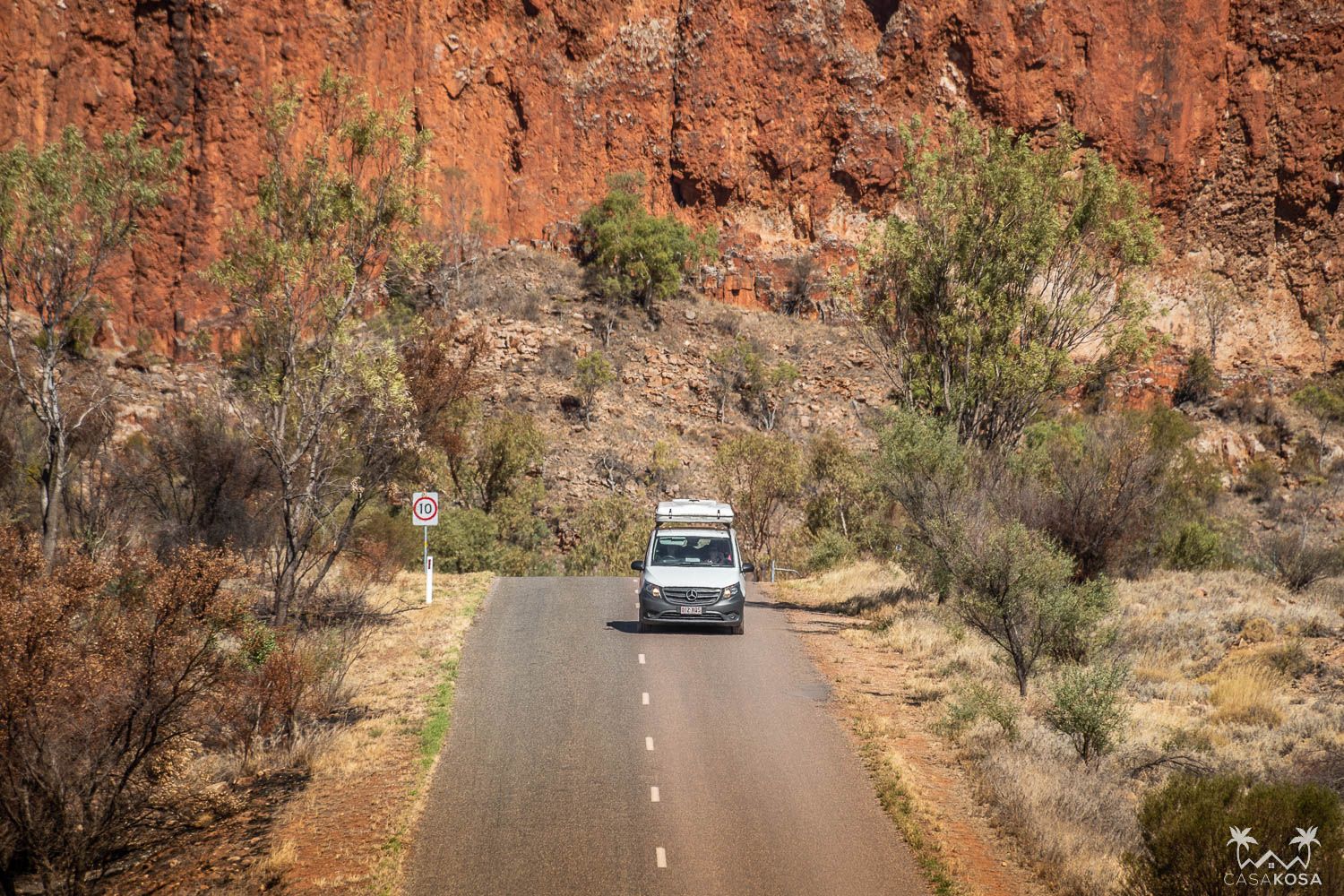
Where did we stay
For our first night in Alice Springs, we booked a room in Alice Lodge Backpackers. This accommodation was very simple, but completely sufficient for our needs. Moreover, there was a nice garden with tables and a small swimming pool to jump in on a hot day (most of them?).
The second night was supposed to be spent somewhere in the desert wilderness around a bonfire, but since we had to change the plans, we stayed one more night in Alice. This time in Alice Secret Backpackers which appeared to be one of the most enchanting places we’ve ever slept. We were lucky enough to get probably the nicest wooden chalet with a small cute kitchen. The whole place, including the fairy-tale garden, was very colorful and the creativity of the owners, a German-Swiss couple, could be felt everywhere.

Our last place to sleep in the Red Centre, Ayers Rock Campground, was amazing. As already described earlier, we tried sleeping in swags under millions of stars for the first time. No tents, just an upper part of the sleeping bag thrown over our heads. In the Australian Outback. It felt quite romantic. On the other hand, it was freezing cold, but our merino layers saved us. However, the campsite wasn’t quite such a wild wilderness, since we had toilets and showers and even a bit of electricity. Anyways, we would happily stay longer :)


Leave a Reply